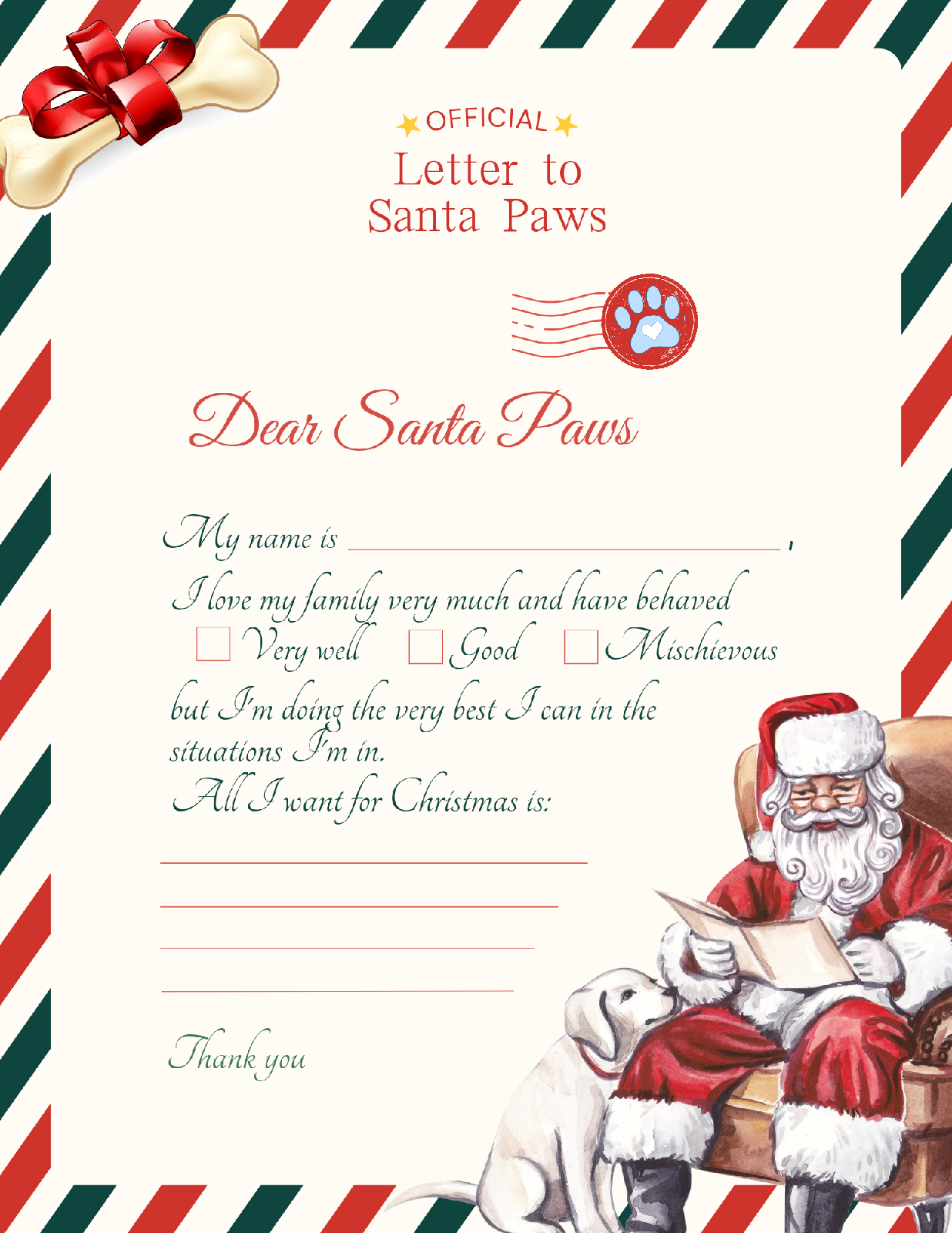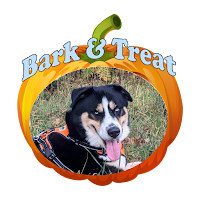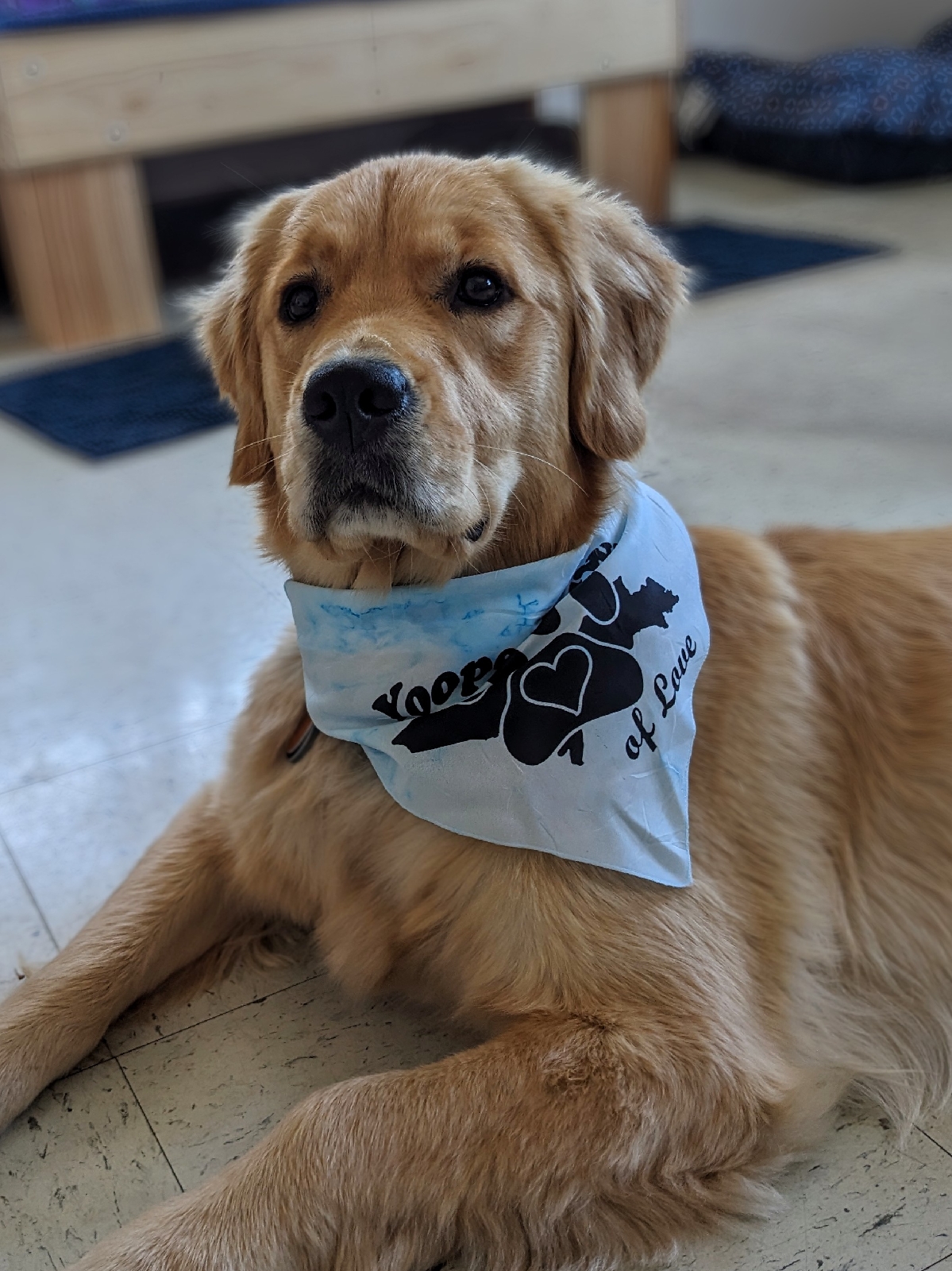Yooper Paws of Love is dedicated to providing training with love to you and your 4-legged friend! My mission as a trainer is to EDUCATE owners to ENGAGE better with their dogs to EMPOWER them to function as an effective team together. As a trainer, I help families & their dogs learn to enjoy each other’s company by developing a teamwork and games based approach to dog training that is as individualized as the family I’m helping!
Wednesday, December 11, 2024
Santa Paws
 Yooper Paws of Love is dedicated to providing training "With Love"
to you and your 4-legged friend!
My mission as a trainer is to TEACH owners to ENGAGE better with their dogs to empowering them to ACHIEVE their goals using MOTIVATION to create the perfect team of handler and dog.
Yooper Paws of Love is dedicated to providing training "With Love"
to you and your 4-legged friend!
My mission as a trainer is to TEACH owners to ENGAGE better with their dogs to empowering them to ACHIEVE their goals using MOTIVATION to create the perfect team of handler and dog.
Sunday, December 1, 2024
Canine Christmas List
December Theme of the Month
Things to Do With Your Dog in December
- Review Holiday Things that Safe/Harmful for Dogs
- Letter to Santa Paws
- Tree Lighting Ceremony
- Create a Homemade Gift for your Dog
- Puppy Playdate with a Friend
- String Dog Bone Treats for a Christmas Countdown
- Make a Puppy Christmas Card
- Sing Christmas Carols to Your Dog
- Make Holiday Dog Treats
- Christmas Lights Drive/Sniff-a-bout
- Start a New Holiday Tradition
- Make a Puppy Ornament
- Share a Treat By the Fire
- Donate a Dog Toy
- Walk with a Friend
- Watch a Holiday Movie
- Hang a Paw Print Decoration on Your Door
- Hang a Stocking for your Dog
- Pause and Reflect About the Past Year With Your Dog
- Dance with Your Dog
- Read a Book to Your Dog
- Play in the Snow (We went sledding, but I didn't get any picts. I'll repeat this if we get enough snow!)
- Dress Up Together
- Have a Gift Exchange with Another Dog Owner
- Donate Dog Food
- Wrap a Present For Your Dog
- Make Cookies for Santa Paws
- Take Photo in Front of the Christmas Tree
- Make a Training List/Plan
- Prepare Treat Bags for Puppy Friends
 Yooper Paws of Love is dedicated to providing training "With Love"
to you and your 4-legged friend!
My mission as a trainer is to TEACH owners to ENGAGE better with their dogs to empowering them to ACHIEVE their goals using MOTIVATION to create the perfect team of handler and dog.
Yooper Paws of Love is dedicated to providing training "With Love"
to you and your 4-legged friend!
My mission as a trainer is to TEACH owners to ENGAGE better with their dogs to empowering them to ACHIEVE their goals using MOTIVATION to create the perfect team of handler and dog.
Friday, November 29, 2024
Creating Calm Canines
Creating a Calm Christmas Special
- We fill our homes with decorations that might seem unsettling to our dogs, especially the Christmas tree.
- Our schedule or routine often changes with some extra time off work/school plus extra time home with family.
- We are more likely to travel to see family we haven't been able to see since last Christmas.
- We often have people come to stay with us.
- There is extra time spent in stores which adds stress to us all! Christmas shopping, longer than normal lines, bigger crowds, etc. Often our dogs feel this stress in us when we get home!
The 12 Top Tips to Creating a Calm Christmas
Day 2: Create a Safe Space
Day 3: A Present for Your Dog
Day 4: Creating Calm Introductions with People
Day 5: Creating Safety Around Other Animals
Day 6: Taking a Sniff-a-bout
Day 7: Packing for Calm
Day 8: Set Up for Successful Traveling
Day 9: Special Holiday Treats
Day 10: Set Up for Success
Day 11: The Big Day
Day 12: Safe Holiday Exits
Creating a Calm Christmas Virtual Planning Sessions
 Yooper Paws of Love is dedicated to providing training "With Love"
to you and your 4-legged friend!
My mission as a trainer is to TEACH owners to ENGAGE better with their dogs to empowering them to ACHIEVE their goals using MOTIVATION to create the perfect team of handler and dog.
Yooper Paws of Love is dedicated to providing training "With Love"
to you and your 4-legged friend!
My mission as a trainer is to TEACH owners to ENGAGE better with their dogs to empowering them to ACHIEVE their goals using MOTIVATION to create the perfect team of handler and dog.
Wednesday, November 27, 2024
Black Friday Specials!
Announcing the Yooper Paws Black Friday Sales!
The Challenging Behaviors Support Package
The Give Back Special for Online Clients & Referrals
- Buy 1 Session for $75 and receive a 2nd gift certificate free.
- Buy a Challenging Behaviors Package including one 60 min session & 2 follow up 30 min sessions for $150 & receive a 2nd gift certificate free.
- Buy a 6 Session Package for $300 and receive a 2nd gift certificate free.
New Client Private Session Package
Totally FREE Special on Creating a Calm Christmas!

 Yooper Paws of Love is dedicated to providing training "With Love"
to you and your 4-legged friend!
My mission as a trainer is to TEACH owners to ENGAGE better with their dogs to empowering them to ACHIEVE their goals using MOTIVATION to create the perfect team of handler and dog.
Yooper Paws of Love is dedicated to providing training "With Love"
to you and your 4-legged friend!
My mission as a trainer is to TEACH owners to ENGAGE better with their dogs to empowering them to ACHIEVE their goals using MOTIVATION to create the perfect team of handler and dog.
Saturday, October 26, 2024
Halloween Safety Tips
It's that time of year and Halloween is rapidly approaching!
Trick-or-Treating or Walking the Neighborhood
Staying Home, Passing Out Candy, Avoiding People
Door Safety
 If you will pass out candy to trick-or-treaters you need to consider safety first. Is your dog friendly with strangers? What happens when someone knocks on the door? Does your dog run out the door the moment it's opened? First think of your dog's safety first!
If you will pass out candy to trick-or-treaters you need to consider safety first. Is your dog friendly with strangers? What happens when someone knocks on the door? Does your dog run out the door the moment it's opened? First think of your dog's safety first! Attending Trunk & Treats
- We are setting up a trunk so that my dogs can hang out in their safe space of the car. This way they get to see all the kids, but only interact with those that the dogs choose to.
- My SUV allows for me to set up multiple sections. If a dog does not want to interact with kids, they can hang out in the backseat.
- My dogs will allows be attacked to either the car or me if I take one out of the car for a bit. This prevents them from jumping out of the car when I'm busy with passing out candy. I use a seatbelt leash to secure both dogs.
- My dogs have a new bone that they can chew on during the event. Licking, chewing & sniffing help to reduce stress.
- I also have a treat container with both high and low value treats that will be passed out liberally.to reinforce calm.
And please, don't dress your dog up if they don't like wearing clothing!
 Yooper Paws of Love is dedicated to providing training "With Love"
to you and your 4-legged friend!
My mission as a trainer is to TEACH owners to ENGAGE better with their dogs to empowering them to ACHIEVE their goals using MOTIVATION to create the perfect team of handler and dog.
Yooper Paws of Love is dedicated to providing training "With Love"
to you and your 4-legged friend!
My mission as a trainer is to TEACH owners to ENGAGE better with their dogs to empowering them to ACHIEVE their goals using MOTIVATION to create the perfect team of handler and dog.
Saturday, October 12, 2024
A Fresh Start Workshop
A Fresh Start to Dog Training!
A Fresh Start Workshop is designed to showcase how positive reinforcement based training has been used to create a teamwork based approach to dog training. Each week there will be a topic of the week with 3 levels of games you can play with your dog. Every Monday, Workshop Members will receive a lesson with basic info and training tips for the topic including a game to play. Mid-week you will receive another lesson that will help you expand the skills you began practicing at the beginning of the week.
A Fresh Start Workshop has been created for clients who have adopted a new dog or are starting over with positive reinforcement based training with an emphasis on teamwork to enhance the canine behaviors. Teams with advanced training, including the Service Dog Teams working with Crazy2Calm Canine Coaches will benefit from practicing these foundation skills to enhance communication and partnership in day to day life. The workshop is designed to provide you with a simple to use training plan, making it easy for you to stay active in training all winter.
There will be 3 levels of games in each topic. The basic level will be designed for people who have never trained the skill in that topic. The intermediate level will be perfect for adolescents with some experience in the topic but need to build up to the next level. The advanced level is awesome for teams like Azul and I who just want to have some fun building engagement to keep our relationship strong. You get all 3 levels, so it's up to you to choose which level is perfect for your team every week.
A Fresh Start Works is perfect for owner/dog teams aiming for a stronger relationship with their dog, creating skills that are helpful for all family pets to live a safe, calm, and happy lifestyle.
Sign Up Available on Patreon
A Fresh Start Workshop is designed to take place over a 5 month time period so plan on being a member for at least 5 months. Still that is over $300 worth of resources for just $50!
Let us help you make that Fresh Start with your dog!
Sign up for your FREE Yooper Paws Membership now to get great updates about this workshop and some early learning resources.
Then beginning Nov 1st you can upgrade to the Fresh Start Membership to participate in the paid workshop for $10 per month. The workshop will officially begin on November 18th!
FAQ Section
How long do I have access to the materials? Yooper Paws of Love is dedicated to providing training "With Love"
to you and your 4-legged friend!
My mission as a trainer is to TEACH owners to ENGAGE better with their dogs to empowering them to ACHIEVE their goals using MOTIVATION to create the perfect team of handler and dog.
Yooper Paws of Love is dedicated to providing training "With Love"
to you and your 4-legged friend!
My mission as a trainer is to TEACH owners to ENGAGE better with their dogs to empowering them to ACHIEVE their goals using MOTIVATION to create the perfect team of handler and dog.
Thursday, October 3, 2024
Bark & Treat
Join us for some fall fun at the Yooper Paws Training Center!
Bark & Treat
$10 To Enter the Trunk Design Contest!
Bark & Treat Owners
Contact Yooper Paws of Love to reserve your Bark & Treat spot and enter the Trunk Decorating Contest.
 Yooper Paws of Love is dedicated to providing training "With Love"
to you and your 4-legged friend!
My mission as a trainer is to TEACH owners to ENGAGE better with their dogs to empowering them to ACHIEVE their goals using MOTIVATION to create the perfect team of handler and dog.
Yooper Paws of Love is dedicated to providing training "With Love"
to you and your 4-legged friend!
My mission as a trainer is to TEACH owners to ENGAGE better with their dogs to empowering them to ACHIEVE their goals using MOTIVATION to create the perfect team of handler and dog.
Monday, September 30, 2024
Changing Needs
Finding Balance with Changing Needs
What does your dog need?
Age, Health, & Physical Needs
Emotional & Social Needs
Mental Needs
Fall Special!
 Yooper Paws of Love is dedicated to providing training "With Love"
to you and your 4-legged friend!
My mission as a trainer is to TEACH owners to ENGAGE better with their dogs to empowering them to ACHIEVE their goals using MOTIVATION to create the perfect team of handler and dog.
Yooper Paws of Love is dedicated to providing training "With Love"
to you and your 4-legged friend!
My mission as a trainer is to TEACH owners to ENGAGE better with their dogs to empowering them to ACHIEVE their goals using MOTIVATION to create the perfect team of handler and dog.
Thursday, September 5, 2024
September Schedule
 Yooper Paws of Love is dedicated to providing training "With Love"
to you and your 4-legged friend!
My mission as a trainer is to TEACH owners to ENGAGE better with their dogs to empowering them to ACHIEVE their goals using MOTIVATION to create the perfect team of handler and dog.
Yooper Paws of Love is dedicated to providing training "With Love"
to you and your 4-legged friend!
My mission as a trainer is to TEACH owners to ENGAGE better with their dogs to empowering them to ACHIEVE their goals using MOTIVATION to create the perfect team of handler and dog.
Saturday, August 3, 2024
Distracted Dog Days
 Yooper Paws of Love is dedicated to providing training "With Love"
to you and your 4-legged friend!
My mission as a trainer is to TEACH owners to ENGAGE better with their dogs to empowering them to ACHIEVE their goals using MOTIVATION to create the perfect team of handler and dog.
Yooper Paws of Love is dedicated to providing training "With Love"
to you and your 4-legged friend!
My mission as a trainer is to TEACH owners to ENGAGE better with their dogs to empowering them to ACHIEVE their goals using MOTIVATION to create the perfect team of handler and dog.
Thursday, July 25, 2024
Creating Patterns
How do you create patterns to speed up your dog training?
When to use patterns and when to avoid patterns!
 Yooper Paws of Love is dedicated to providing training "With Love"
to you and your 4-legged friend!
My mission as a trainer is to TEACH owners to ENGAGE better with their dogs to empowering them to ACHIEVE their goals using MOTIVATION to create the perfect team of handler and dog.
Yooper Paws of Love is dedicated to providing training "With Love"
to you and your 4-legged friend!
My mission as a trainer is to TEACH owners to ENGAGE better with their dogs to empowering them to ACHIEVE their goals using MOTIVATION to create the perfect team of handler and dog.
Sunday, June 30, 2024
July Party Schedule
Announcing our Summer Session Special!
We are starting with an altered scheduled for July 1st -3rd
- Phone calls for current clients of 30 minutes or less will be $50.
- In-person sessions for current of 60 minutes or less will be $75
- New clients in need of an emergency session during this time will be expected to pay for a package including the Behavior Evaluation and 6 Session package for $450 + $50 emergency session fee.
 Yooper Paws of Love is dedicated to providing training "With Love"
to you and your 4-legged friend!
My mission as a trainer is to TEACH owners to ENGAGE better with their dogs to empowering them to ACHIEVE their goals using MOTIVATION to create the perfect team of handler and dog.
Yooper Paws of Love is dedicated to providing training "With Love"
to you and your 4-legged friend!
My mission as a trainer is to TEACH owners to ENGAGE better with their dogs to empowering them to ACHIEVE their goals using MOTIVATION to create the perfect team of handler and dog.
-
What to Expect During Your First Session with Yooper Paws of Love At Yooper Paws of Love, our mission is simple: to provide compassionate, e...
-
Holiday List Item #1: Review Holiday Things that Safe/Harmful for Dogs It’s easy to find multiple lists of what is healthy for dogs and what...
-
We are currently accepting registration for the next Positively Puppy Class at the Yooper Paws Training Center! This is a basic class that...












.png)



















